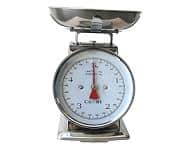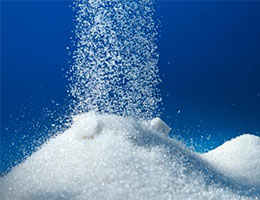CONTINUOUS VARIABLE
A variable is called a symbol that acts on the propositions, formulas, functions and algorithms of statistics and mathematics and that has the particularity of being able to adopt different values .

According to its characteristics, it is possible to speak of different types of variables, such as variables quantitative the qualitative variables , the independent variables , the dependent variables and random variables . This time, we will focus on continuous variables.
A continuous variable is one that can take any value within an interval that is already predetermined. Between two of the values, there can always be another intermediate value , which can be taken as a value by the continuous variable.
These particularities differentiate the continuous variable from the discrete variable , which can only acquire one value from a set of numbers. There are gaps between successive values that can be observed: that is, they are not “filled” with other intermediate values.
A person may have one or two televisions, but never one and a half; However, if we talk about cups of sugar, between one and another there are a large number of intermediate values, which appear as we add grains.
Continuous variables, in theory, cannot be measured with absolute accuracy : the value that is observed depends on the instrument used for the measurement. Let's consider continuous variables based on the weight of a person . It can weigh 78.5 kilograms , 78.54 kilograms or 78.546 kilograms according to the accuracy of the balance. The example reveals that, when working with continuous variables, one must accept the existence of a measurement error that must be tried to minimize, since it implies a difference between the true value and the measured value.
It is important to note that there are always measurement errors , since this is something inherent in measuring instruments ; however, in each case there may be different causes. On the other hand, it is possible to anticipate some of them, and thus try to reduce their impact through procedures such as calibration and compensation.
The accuracy in the measurement is something as relative as the errors, since it depends largely on the intentions of the subject who carries it out: when we buy food in the market we are not interested in knowing if the weight indicated on the packages is exact, rather, we are content with the fact that manufacturers do not try to deceive us by giving us considerably less.
 Do all the 1-kilogram bags of rice have the same amount of grain and weigh exactly the same? Well, it is possible to answer the first answer, since for this it is enough to count the grains; However, the second involves the problem of measurement errors , since depending on the scale used we could say yes or no.
Do all the 1-kilogram bags of rice have the same amount of grain and weigh exactly the same? Well, it is possible to answer the first answer, since for this it is enough to count the grains; However, the second involves the problem of measurement errors , since depending on the scale used we could say yes or no.
When we work with continuous variables, we are especially interested in the limits, which we can call "minimum" and "maximum", and the margin of error, which must also be applied to know if we have reached these points. Having established this structure , it is possible to take advantage of this concept to perform endless jobs.
In video game programming, for example, the concept of continuous variable can appear in various cases, such as the acceleration of characters or objects: it is always necessary to have a range of possible values , such as the minimum and maximum speed, among which appear many others, whose precision is determined according to the resources of the machine.
The higher the precision, which in this case could be linked to the number of decimal places, the smoother the graphical representation on the screen will be, since the adjustments made to locate the objects will not be able to be easily perceived by the players.
Comments
Post a Comment